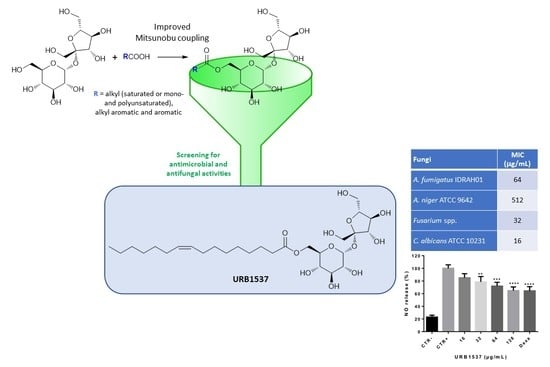Synthesis and Biological Evaluation of 6-O-Sucrose Monoester Glycolipids as Possible New Antifungal Agents
Abstract
:1. Introduction
2. Results and Discussion
2.1. Chemistry
2.2. Antibacterial Activity
2.3. Antifungal Activity
2.4. Radical Scavenging Activity
2.5. Biocompatibility Assay
2.6. Anti-Inflammatory Activity
3. Materials and Methods
3.1. Chemicals
3.2. General Procedure for the Synthesis of Sucrose Ester Surfactants (3a–m, URB1480-1482, URB1534-1543)
3.3. Bacterial Strains and Culture Conditions
3.4. Fungi and Culture Conditions
3.5. Minimum Inhibitory Concentration (MIC)
3.6. DPPH Assays
3.7. Cytotoxicity Assay
3.8. Griess Assay
3.9. Statistical Analysis
4. Conclusions
Author Contributions
Funding
Institutional Review Board Statement
Informed Consent Statement
Data Availability Statement
Acknowledgments
Conflicts of Interest
References
- Almeida, F.; Rodrigues, M.L.; Coelho, C. The still underestimated problem of fungal diseases worldwide. Front. Microbiol. 2019, 10, 214. [Google Scholar] [CrossRef] [Green Version]
- Liu, W.; Yuan, L.; Wang, S. Recent progress in the discovery of antifungal agents targeting the cell wall. J. Med. Chem. 2020, 63, 12429–12459. [Google Scholar] [CrossRef] [PubMed]
- Heard, S.C.; Wu, G.; Winter, J.M. Antifungal natural products. Curr. Opin. Biotechnol. 2021, 69, 232–241. [Google Scholar] [CrossRef] [PubMed]
- Dai, J.-K.; Dan, W.-J.; Wan, J.-B. Natural and synthetic β-carboline as a privileged antifungal scaffolds. J. Med. Chem. 2022, 229, 114057. [Google Scholar] [CrossRef]
- Van Daele, R.; Spriet, I.; Wauters, J.; Maertens, J.; Mercier, T.; Van Hecke, S.; Brüggemann, R. Antifungal drugs: What brings the future? Med. Mycol. 2019, 57, S328–S343. [Google Scholar] [CrossRef] [Green Version]
- Bouz, G.; Doležal, M. Advances in antifungal drug development: An up-to-date mini review. Pharmaceuticals 2021, 14, 1312. [Google Scholar] [CrossRef]
- Aslam, B.; Wang, W.; Arshad, M.I.; Khurshid, M.; Muzammil, S.; Rasool, M.H.; Nisar, M.A.; Alvi, R.F.; Aslam, M.A.; Qamar, M.U.; et al. Antibiotic resistance: A rundown of a global crisis. Infect. Drug Resist. 2018, 11, 1645–1658. [Google Scholar] [CrossRef] [Green Version]
- Teng, Y.; Stewart, S.G.; Hai, Y.W.; Li, X.; Banwell, M.G.; Lan, P. Sucrose fatty acid esters: Synthesis, emulsifying capacities, biological activities and structure-property profiles. Crit. Rev. Food Sci. Nutr. 2021, 61, 3297–3317. [Google Scholar] [CrossRef]
- Farran, A.; Cai, C.; Sandoval, M.; Xu, Y.; Liu, J.; Hernaiz, M.J.; Linhardt, R.J. Green solvents in carbohydrate chemistry: From raw materials to fine chemicals. Chem. Rev. 2015, 115, 6811–6853. [Google Scholar] [CrossRef]
- Polat, T.; Linhardt, R.J. Syntheses and applications of sucrose-based esters. J. Surf. Deterg. 2001, 4, 415–421. [Google Scholar] [CrossRef]
- Garti, N.; Clement, V.; Fanun, M.; Leser, M.E. Some characteristics of sugar ester nonionic microemulsions in view of possible food applications. J. Agric. Food Chem. 2000, 48, 3945–3956. [Google Scholar] [CrossRef] [PubMed]
- Megahed, M.G. Preparation of sucrose fatty acid esters as food emulsifiers and evaluation of their surface active and emulsification properties. Grasas Aceites 1999, 50, 280–282. [Google Scholar] [CrossRef]
- Devulapalle, K.S.; Gomez de Segura, A.; Ferrer, M.; Alcalde, M.; Mooser, G.; Plou, F. Effect of carbohydrate fatty acid esters on Streptococcus sobrinus and glucosyltransferase activity. Carbohydr. Res. 2004, 339, 1029–1034. [Google Scholar] [CrossRef]
- Chortyk, O.T.; Pomonis, J.G.; Johnson, A.W. Syntheses and characterizations of insecticidal sucrose esters. J. Agric. Food Chem. 1996, 44, 1551–1557. [Google Scholar] [CrossRef]
- Markets and Markets. Sucrose Esters Market Worth $106 Million by 2025. Available online: https://www.marketsandmarkets.com/PressReleases/sucrose-esters.asp (accessed on 23 November 2022).
- Verboni, M.; Lucarini, S.; Duranti, A. 6’-O-Lactose ester surfactants as an innovative opportunity in the pharmaceutical field: From synthetic methods to biological applications. Pharmaceuticals 2021, 14, 1306. [Google Scholar] [CrossRef] [PubMed]
- Lucarini, S.; Fagioli, L.; Campana, R.; Cole, H.; Duranti, A.; Baffone, W.; Vllasaliu, D.; Casettari, L. Unsaturated fatty acids lactose esters: Cytotoxicity, permeability enhancement and antimicrobial activity. Eur. J. Pharm. Biopharm. 2016, 107, 88–96. [Google Scholar] [CrossRef]
- Perinelli, D.R.; Lucarini, S.; Fagioli, L.; Campana, R.; Vllasaliu, D.; Duranti, A.; Casettari, L. Lactose oleate as new biocompatible surfactant for pharmaceutical applications. Eur. J. Pharm. Biopharm. 2018, 124, 55–62. [Google Scholar] [CrossRef]
- Lucarini, S.; Fagioli, L.; Cavanagh, R.; Liang, W.; Perinelli, D.; Campana, M.; Stolnik, S.; Lam, J.; Casettari, L.; Duranti, A. Synthesis, structure–activity relationships and in vitro toxicity profile of lactose-based fatty acid monoesters as possible drug permeability enhancers. Pharmaceutics 2018, 10, 81. [Google Scholar] [CrossRef] [Green Version]
- Campana, R.; Merli, A.; Verboni, M.; Biondo, F.; Favi, G.; Duranti, A.; Lucarini, S. Synthesis and evaluation of saccharide-based aliphatic and aromatic esters as antimicrobial and antibiofilm agents. Pharmaceuticals 2019, 12, 186. [Google Scholar] [CrossRef] [Green Version]
- Lucarini, S.; Ciulla, M.G.; Mestichelli, P.; Duranti, A. Total Synthesis of Natural Disaccharide Sambubiose. Pharmaceuticals 2020, 13, 198. [Google Scholar] [CrossRef]
- McCartney, F.; Perinelli, D.R.; Tiboni, M.; Cavanagh, R.; Lucarini, S.; Palmieri, G.P.; Casettari, L.; Brayden, D.J. Permeability-enhancing effects of three laurate-disaccharide monoesters across isolated rat intestinal mucosae. Int. J. Pharm. 2021, 601, 120593. [Google Scholar] [CrossRef]
- Tiboni, M.; Elmowafy, E.; El-Derany, M.O.; Benedetti, S.; Campana, R.; Verboni, M.; Potenza, L.; Palma, F.; Citterio, B.; Sisti, M.; et al. A combination of sugar esters and chitosan to promote in vivo wound care. Int. J. Pharm. 2022, 616, 121508. [Google Scholar] [CrossRef]
- Verboni, M.; Benedetti, S.; Campana, R.; Palma, F.; Potenza, L.; Sisti, M.; Duranti, A.; Lucarini, S. Synthesis and Biological Characterization of the New Glycolipid Lactose Undecylenate (URB1418). Pharmaceuticals 2022, 15, 456. [Google Scholar] [CrossRef] [PubMed]
- Molinier, V.; Fitremann, J.; Bouchu, A.; Queneau, Y. Sucrose esterification under Mitsunobu conditions: Evidence for the formation of 6-O-acyl-3’,6’-anhydrosucrose besides mono and diesters of fatty acids. Tetrahedron Asymmetry 2004, 15, 1753–1762. [Google Scholar] [CrossRef]
- Vlahov, I.R.; Vlahova, P.I.; Linhardt, R.J. Regioselective synthesis of sucrose monoesters as surfactants. J. Carb. Chem. 1997, 16, 1–10. [Google Scholar] [CrossRef]
- Thévenet, S.; Wernicke, A.; Belniak, S.; Descotes, G.; Bouchu, A.; Queneau, Y. Esterification of unprotected sucrose with acid chlorides in aqueous medium: Kinetic reactivity versus acyl- or alkyloxycarbonyl-group migrations. Carb. Res. 1999, 318, 52–66. [Google Scholar] [CrossRef]
- Cruces, M.A.; Plou, F.J.; Ferrer, M.; Bernabé, M.; Ballesteros, A. Improved synthesis of sucrose fatty acid monoesters. J. Am. Oil Chem. Soc. 2001, 78, 541–546. [Google Scholar] [CrossRef]
- Jarosz, S.; Mach, M. Regio- and stereoselective transformations of sucrose at the terminal positions. Eur. J. Org. Chem. 2002, 2002, 769–780. [Google Scholar] [CrossRef]
- Ferrer, M.; Cruces, M.A.; Bernabé, M.; Ballesteros, A.; Plou, F.J. Lipase-catalyzed regioselective acylation of sucrose in two solvent mixtures. Biotechnol. Bioeng. 1999, 65, 10–16. [Google Scholar] [CrossRef]
- Shi, Y.-G.; Li, J.R.; Chu, Y.-H. Enzyme-catalyzed regioselective synthesis of sucrose-based esters. J Chem. Tec. Biotechnol. 2011, 86, 1457–1468. [Google Scholar] [CrossRef]
- Possiel, C.; Bäuerle, A.; Seibel, J.J. A chemoenzymatic route to a class of sucrose esters. Eur. J. Org. Chem. 2017, 2017, 6335–6337. [Google Scholar] [CrossRef]
- Griffin, W.C. Calculation of HLB values of non-ionic surfactants. J. Soc. Cosmet. Chem. 1954, 5, 249–256. [Google Scholar]
- Organic Chemistry Portal. Available online: https://www.organic-chemistry.org/prog/ (accessed on 20 December 2022).
- Zhao, L.; Zhang, H.; Hao, T.; Li, S. In vitro antibacterial activities and mechanism of sugar fatty acid esters against five food-related bacteria. Food Chem. 2015, 187, 370–377. [Google Scholar] [CrossRef] [PubMed]
- Karlová, T.; Poláková, L.; Šmidrkal, J.; Filip, V. Antimicrobial effects of fatty acid fructose esters. Czech J. Food Sci. 2010, 28, 146–149. [Google Scholar] [CrossRef] [Green Version]
- Petkova, N.; Vassilev, D.; Arabadzhieva, R.; Tumbarski, Y.; Vasileva, I.; Koleva, M.; Denev, P. “Green” synthesis of sucrose octaacetate and characterization of its physicochemical properties and antimicrobial activity. Chem. Biochem. Eng. Q. 2017, 31, 395–402. [Google Scholar] [CrossRef]
- Merghni, A.; Dallel, I.; Noumi, E.; Kadmi, Y.; Hentati, H.; Tobji, S.; Ben Amor, A.; Mastouri, M. Antioxidant and antiproliferative potential of biosurfactants isolated from Lactobacillus casei and their anti-biofilm effect in oral Staphylococcus aureus strains. Microb. Pathog. 2017, 104, 84–89. [Google Scholar] [CrossRef]
- Giri, S.S.; Ryu, E.C.; Sukumaran, V.; Park, S.C. Antioxidant, antibacterial, and anti-adhesive activities of biosurfactants isolated from Bacillus strains. Microb. Pathog. 2019, 132, 66–72. [Google Scholar] [CrossRef]
- Geran, R.I.; Greenberg, N.H.; Macdonald, M.M.; Schumacher, A.M.; Abbott, B.J. Protocols for screening chemical agents and natural products against animal tumors and other biological systems (Third Edition). Cancer Chemother. Rep. 1972, 3, 59–61. [Google Scholar]
- Li, W.; Sun, Y.N.; Yan, X.T.; Yang, S.Y.; Song, S.B.; Lee, Y.M.; Kim, Y.H. NF-κB Inhibitory activity of sucrose fatty acid esters and related constituents from Astragalus membranaceus. J. Agric. Food Chem. 2013, 61, 7081–7088. [Google Scholar] [CrossRef]
- Souza, C.O.; Teixeira, A.A.S.; Biondo, L.A.; Silveira, L.S.; Calder, F.P.; Neto, J.C.R. Palmitoleic acid reduces the inflammation in LPS-stimulated macrophages by inhibition of NFκB, independently of PPARs. Clin. Exp. Pharmacol. Physiol. 2017, 44, 566–575. [Google Scholar] [CrossRef] [Green Version]
- Abran, D.; Boucher, F.; Hamanaka, T.; Hiraki, K.; Kito, Y.; Koyama, K.; Leblanc, R.M.; Machida, H.; Munger, G.; Seidou, M.; et al. On some physicochemical properties of sucrose esters and the stability they confer to membrane proteins. J. Colloid Interface Sci. 1989, 128, 230–236. [Google Scholar] [CrossRef]
- Youan, B.-B.C.; Hussain, A.; Nguyen, N.T. Evaluation of sucrose esters as alternative surfactants in microencapsulation of proteins by the solvent evaporation method. AAPS PharmSci. 2003, 5, 222–230. [Google Scholar] [CrossRef] [PubMed]
- Li, J.; Jiang, Y.; Tu, P.-F. Tricornoses A−L, oligosaccharide multi-esters from the roots of Polygala tricornis. J. Nat. Prod. 2005, 68, 739–744. [Google Scholar] [CrossRef] [PubMed]
- Furuya, T.; Ushiyama, M.; Asada, Y.; Yoshikawa, T.; Orihara, Y. Biotransformation of phenylacetic acid and 2-phenyl-propionic acid in suspension culture of offea arabica. Phytochemistry 1988, 27, 803–807. [Google Scholar] [CrossRef]

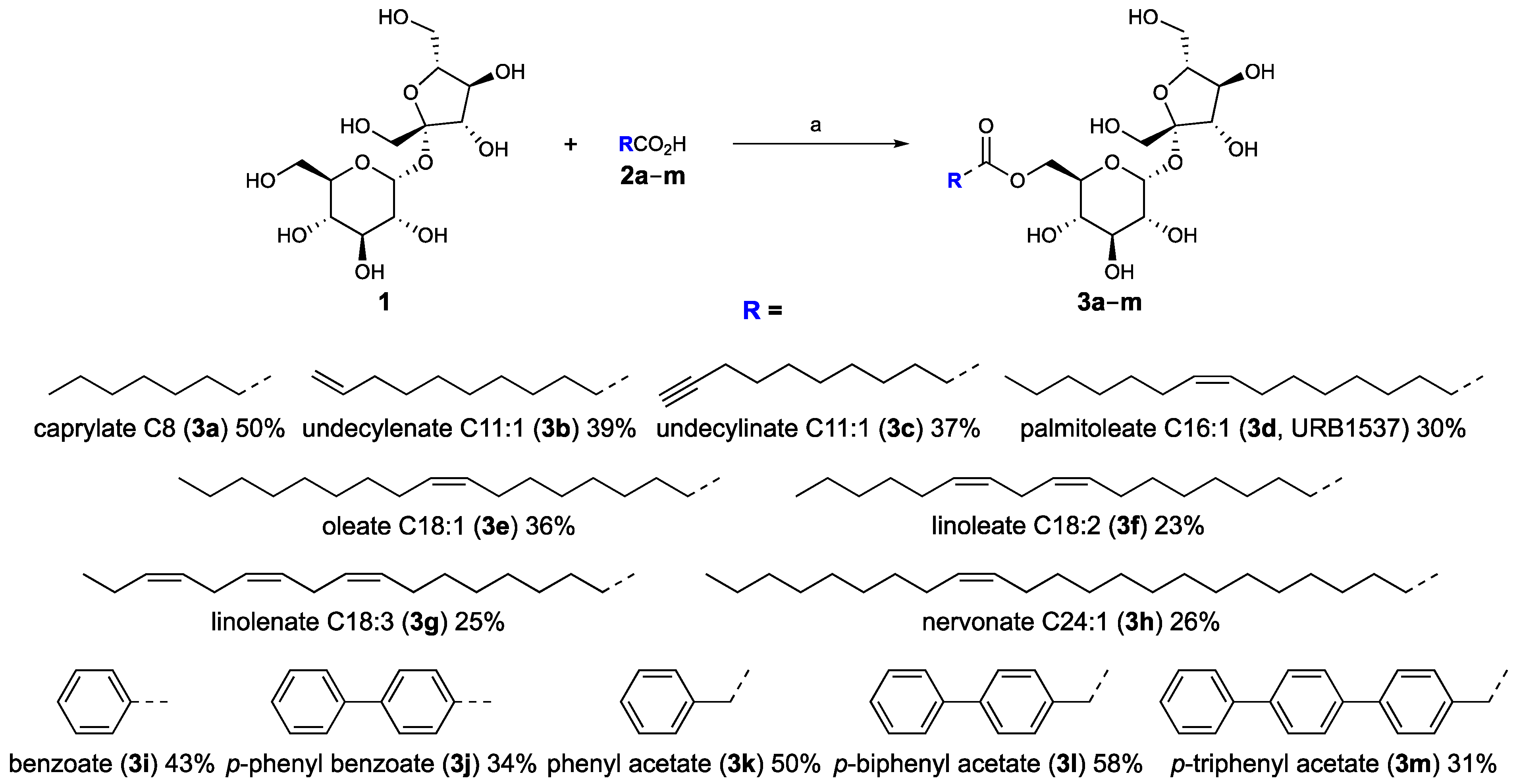
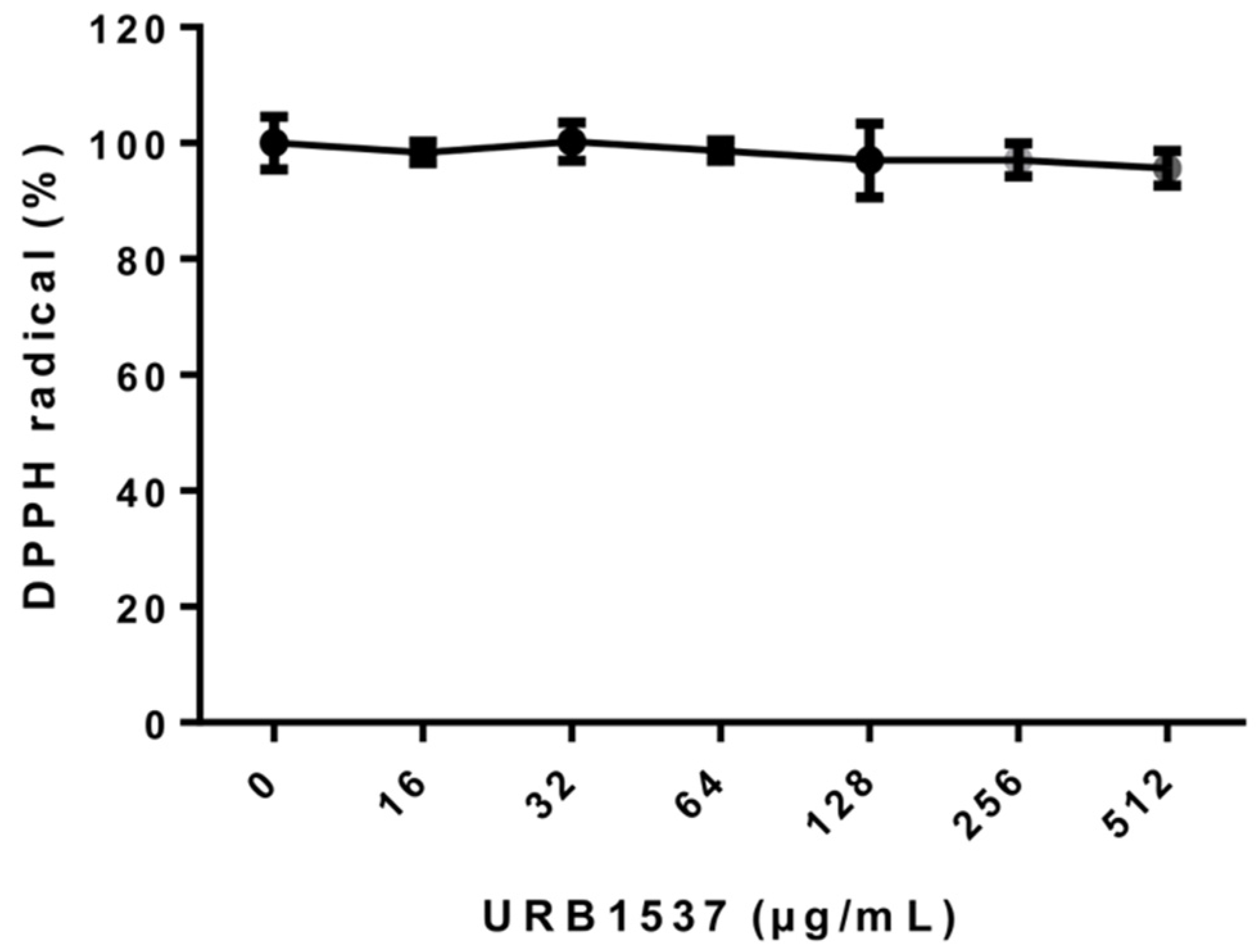
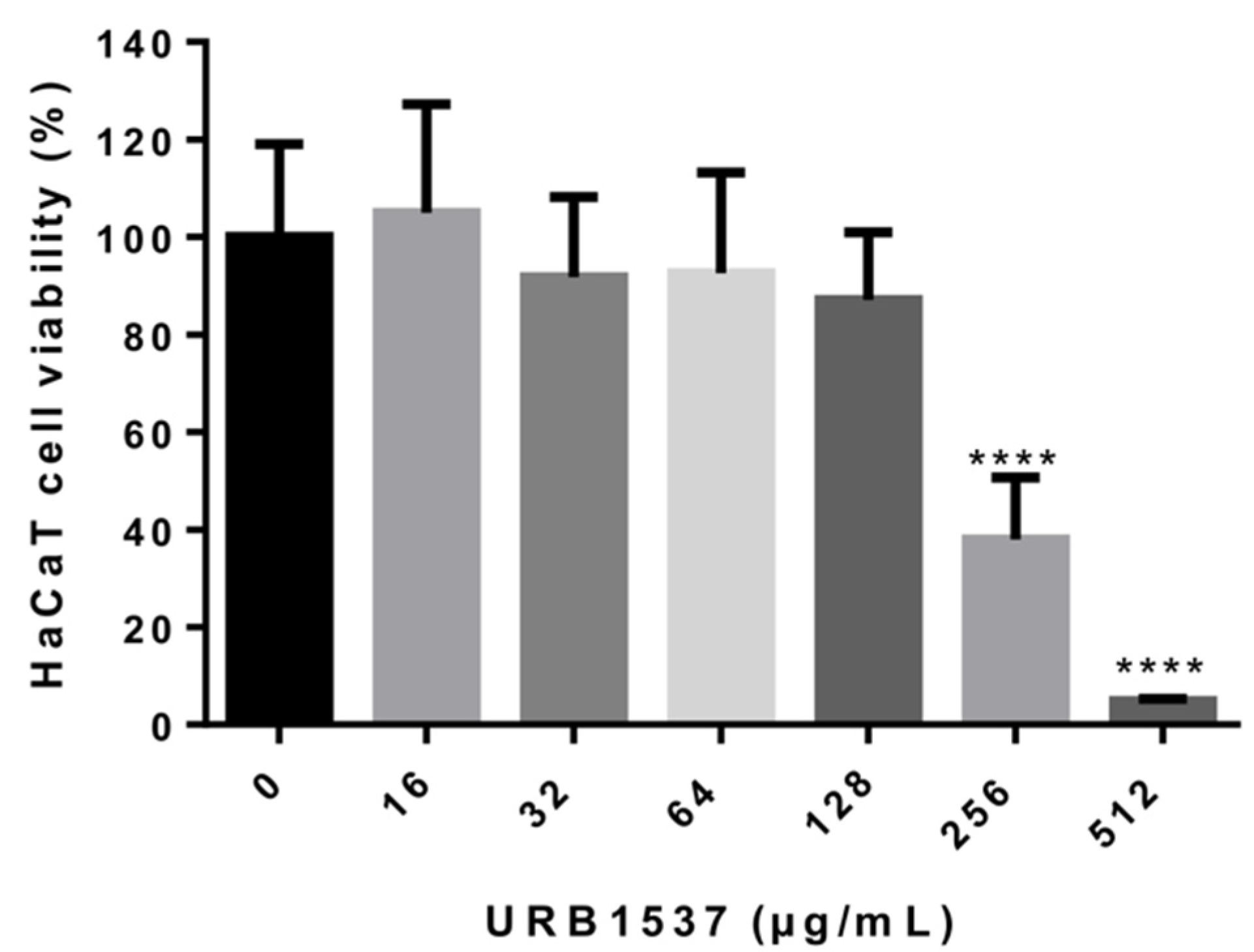
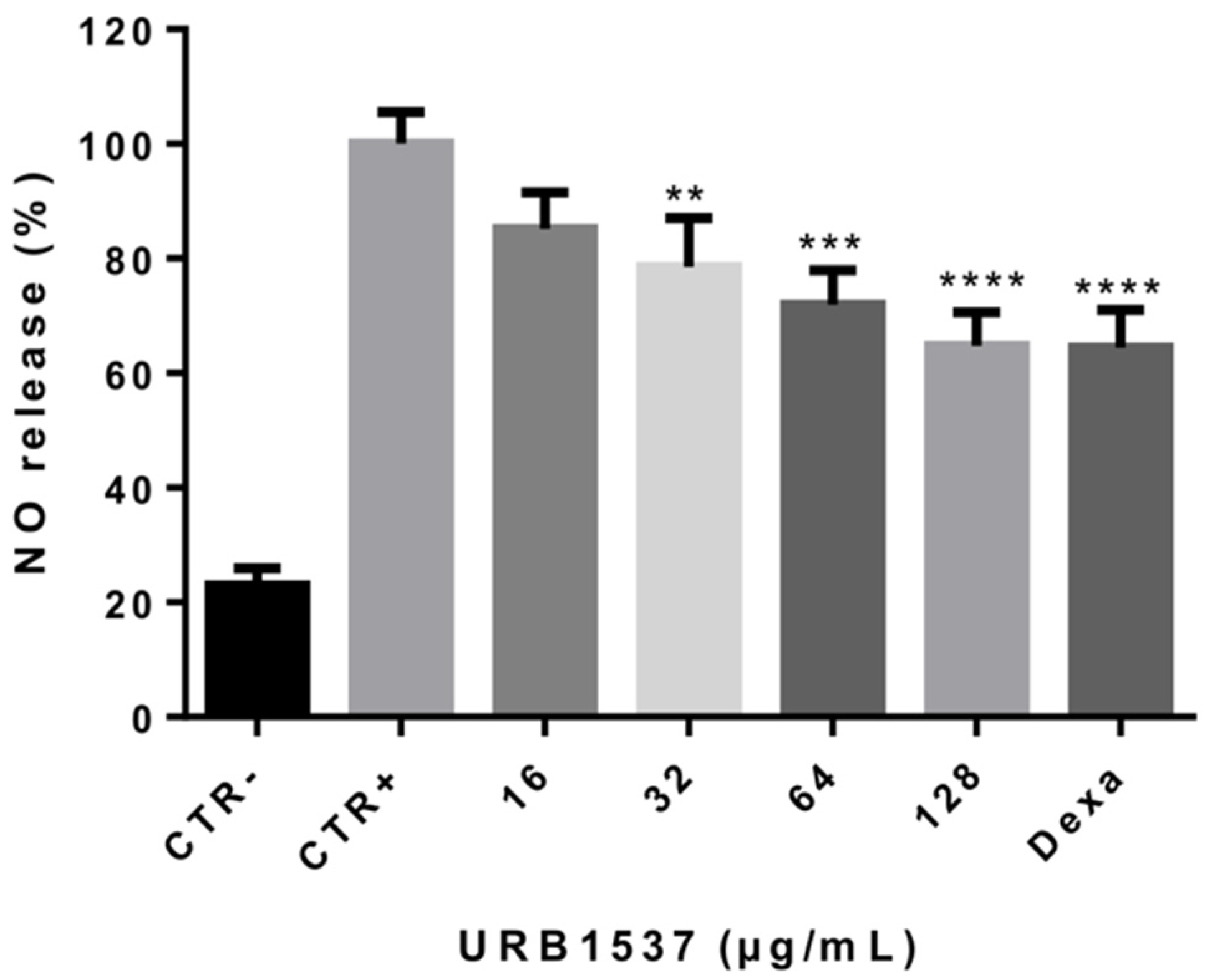

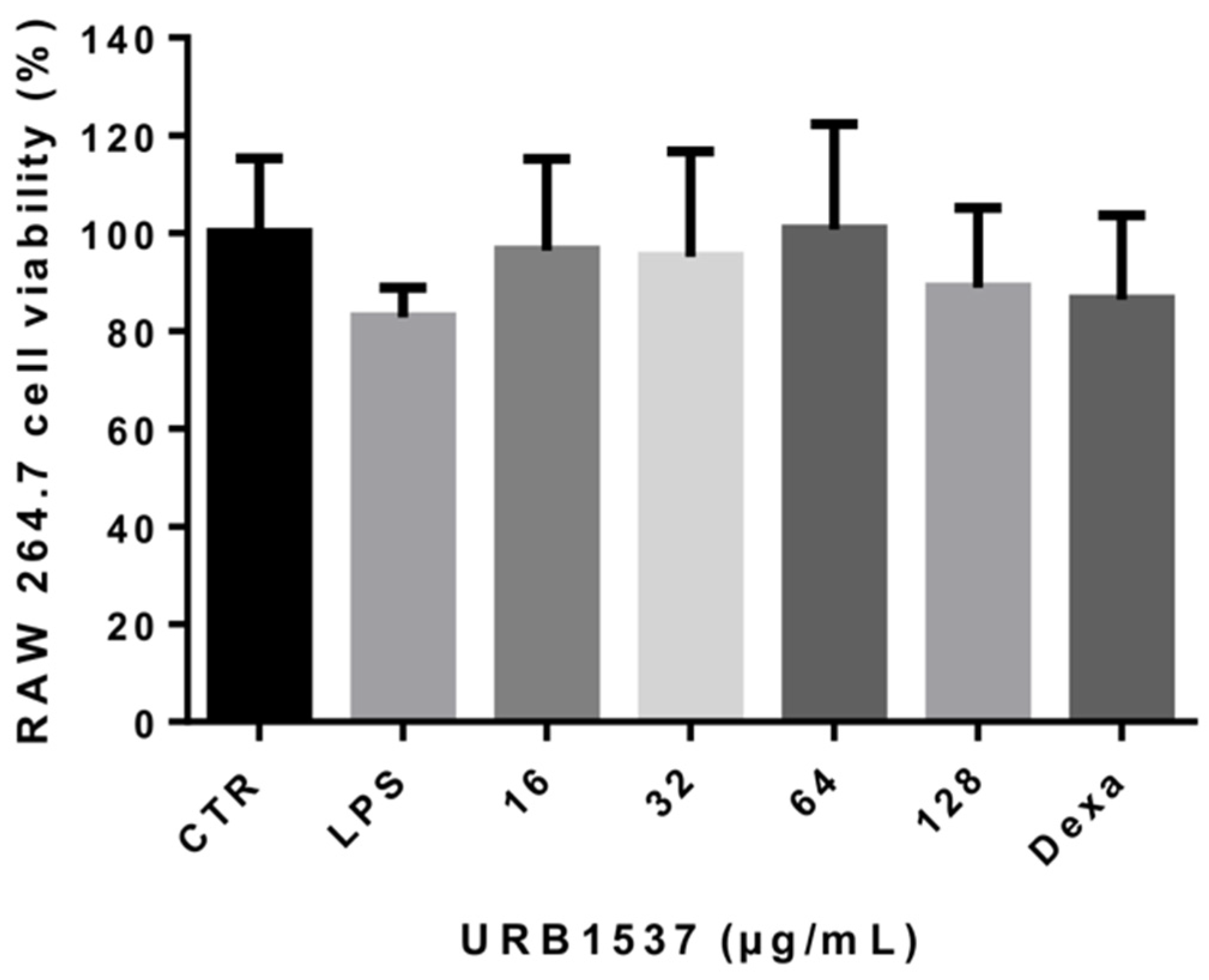
| Entry | Sucrose Ester | MW | HLB a | LogP b |
|---|---|---|---|---|
| 1 | Caprylate C8 | 468.5 | 12.7 | −1.4 |
| 2 | Undecylenate C11:1 | 508.6 | 11.7 | −0.2 |
| 3 | Undecylinate C11:1 | 506.6 | 11.8 | −0.9 |
| 4 | Palmitoleate C16:1 | 578.7 | 10.3 | 2.0 |
| 5 | Oleate C18:1 | 606.7 | 9.8 | 2.9 |
| 6 | Linoleate C18:2 | 604.7 | 9.9 | 2.6 |
| 7 | Linolenate C18:3 | 602.7 | 9.9 | 2.4 |
| 8 | Nervonate C24:1 | 690.9 | 8.6 | 5.9 |
| 9 | Benzoate | 446.4 | 13.4 | −2.7 |
| 10 | p-Phenyl benzoate | 522.5 | 11.4 | −0.3 |
| 11 | Phenyl acetate | 460.4 | 12.9 | −2.1 |
| 12 | p-Biphenyl acetate | 536.5 | 11.1 | −0.4 |
| 13 | p-Triphenyl acetate | 612.6 | 9.7 | 0.6 |
| Entry a | Eq. 2b | Eq. DIAD:PPh3 | T (°C) | t (h) | Dry Solvent | Yield (%) 3b b | Yield (%) 4 b |
|---|---|---|---|---|---|---|---|
| 1 | 2.5 | 2.7:2.7 | 20 | 24 | DMF | 34 | 38 |
| 2 | 1 | 2.5:2.5 | 20 | 24 | DMF | 19 | trace |
| 3 | 1.5 | 2.5:2.5 | 20 | 24 | DMF | 39 | 15 |
| 4 | 1.5 | 1.5:1.5 | 20 | 24 | DMF | 26 | trace |
| 5 | 1 | 1:1 | 20 | 24 | DMF | trace | - |
| 6 | 1.5 | 3:3 | 20 | 24 | DMF | 39 | 16 |
| 7 | 1.5 | 2.5:2.5 | 60 | 24 | DMF | trace | 41 |
| 8 | 1.5 | 2.5:2.5 | 20 | 6 | DMF | 12 | 2 |
| 9 | 1.5 | 2.5:2.5 | 20 | 12 | DMF | 18 | 9 |
| 10 | 1.5 | 2.5:2.5 | 20 | 24 | THF | trace | - |
| 11 | 1.5 | 2.5:2.5 | 20 | 24 | dioxane | trace | - |
| 12 c | 1.5 | 2.5 c:2.5 | 20 | 24 | DMF | 35 | 19 |
| 13 d | 1.5 | 2.5 d:2.5 | 20 | 24 | DMF | 19 | trace |
| Specie Target | 3a | 3b | 3c | 3d | 3e | 3f | 3g | 3h | 3i | 3j | 3k | 3l | 3m |
|---|---|---|---|---|---|---|---|---|---|---|---|---|---|
| E. faecalis ATCC 29212 | >1024 | >1024 | 1024 | 1024 | 1024 | 256 | 512 | 1024 | 1024 | 1024 | 1024 | >1024 | >1024 |
| E. coli O157:H7 ATCC 35150 | >1024 | >1024 | >1024 | >1024 | >1024 | >1024 | >1024 | >1024 | >1024 | >1024 | >1024 | >1024 | >1024 |
| S. aureus ATCC 29213 | >1024 | >1024 | >1024 | 1024 | 1024 | 1024 | >1024 | >1024 | >1024 | >1024 | >1024 | >1024 | >1024 |
| S. aureus ATCC 43300 | >1024 | >1024 | >1024 | 1024 | 1024 | 1024 | >1024 | >1024 | >1024 | >1024 | >1024 | >1024 | >1024 |
| K. pneumoniae ATCC 13883 | >1024 | >1024 | >1024 | >1024 | >1024 | >1024 | >1024 | >1024 | >1024 | >1024 | >1024 | >1024 | >1024 |
| L. monocytogenes ATCC 7644 | >1024 | >1024 | 1024 | 1024 | 1024 | 1024 | 1024 | >1024 | >1024 | 1024 | >1024 | >1024 | >1024 |
| S. enteritidis ATCC 13076 | >1024 | >1024 | >1024 | >1024 | >1024 | >1024 | >1024 | >1024 | >1024 | >1024 | >1024 | >1024 | >1024 |
| P. aeruginosa ATCC 9027 | >1024 | >1024 | >1024 | >1024 | >1024 | >1024 | >1024 | >1024 | >1024 | >1024 | >1024 | >1024 | >1024 |
| Specie Target | 3a | 3b | 3c | 3d | 3e | 3f | 3g | 3h | 3i | 3j | 3k | 3l | 3m |
|---|---|---|---|---|---|---|---|---|---|---|---|---|---|
| A. fumigatus IDRAH01 | 1024 | 1024 | >1024 | 64 | 16 | 32 | 1024 | 1024 | >1024 | >1024 | 1024 | >1024 | >1024 |
| A. niger ATCC 9642 | 1024 | 512 | >1024 | 512 | 1024 | 1024 | >1024 | >1024 | >1024 | >1024 | >1024 | >1024 | >1024 |
| Fusarium spp. | >1024 | 512 | 1024 | 32 | 128 | 128 | 128 | 1024 | 512 | 1024 | 256 | 1024 | >1024 |
| C. albicans ATCC 10231 | 1024 | 1024 | 1024 | 16 | 1024 | 1024 | 512 | >1024 | 256 | 1024 | 1024 | 1024 | >1024 |
Disclaimer/Publisher’s Note: The statements, opinions and data contained in all publications are solely those of the individual author(s) and contributor(s) and not of MDPI and/or the editor(s). MDPI and/or the editor(s) disclaim responsibility for any injury to people or property resulting from any ideas, methods, instructions or products referred to in the content. |
© 2023 by the authors. Licensee MDPI, Basel, Switzerland. This article is an open access article distributed under the terms and conditions of the Creative Commons Attribution (CC BY) license (https://creativecommons.org/licenses/by/4.0/).
Share and Cite
Verboni, M.; Sisti, M.; Campana, R.; Benedetti, S.; Palma, F.; Potenza, L.; Lucarini, S.; Duranti, A. Synthesis and Biological Evaluation of 6-O-Sucrose Monoester Glycolipids as Possible New Antifungal Agents. Pharmaceuticals 2023, 16, 136. https://doi.org/10.3390/ph16020136
Verboni M, Sisti M, Campana R, Benedetti S, Palma F, Potenza L, Lucarini S, Duranti A. Synthesis and Biological Evaluation of 6-O-Sucrose Monoester Glycolipids as Possible New Antifungal Agents. Pharmaceuticals. 2023; 16(2):136. https://doi.org/10.3390/ph16020136
Chicago/Turabian StyleVerboni, Michele, Maurizio Sisti, Raffaella Campana, Serena Benedetti, Francesco Palma, Lucia Potenza, Simone Lucarini, and Andrea Duranti. 2023. "Synthesis and Biological Evaluation of 6-O-Sucrose Monoester Glycolipids as Possible New Antifungal Agents" Pharmaceuticals 16, no. 2: 136. https://doi.org/10.3390/ph16020136






